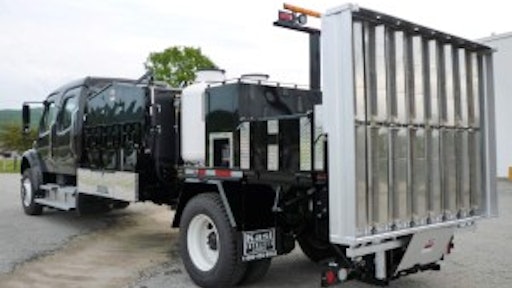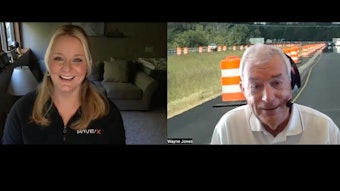
Despite receiving heavy use from many of the contractors who rely on it, infrared repair equipment doesn't need much maintenance halfway through the season to keep it operating at peak efficiency the rest of the way. According to Tom Allen, KASI Infrared general manager, and Cliff Cameron, director of sales and marketing at KM International, these units are designed to be maintained once a year in the offseason so they don't have to be pulled out of service during peak season.
But as with any piece of equipment attention must be paid, and KM International's Cameron says contractors need to monitor the heat times of their units because if there is some type of maintenance to be done or adjustment to be made that's probably the first place they will notice it.
"If they didn't do their annual maintenance, which usually includes replacing the blanket in the offseason, there is the chance their blanket that transfers the heat could be wearing out," Cameron says.
He says infrared users know that heat times can vary depending on the type and age of pavement being heated, but if heat times on normal pavement ranged from 7 to 10 minutes early in the season and getting up to 15 minutes or more then contractors need to consider replacing the blanket in the unit.
KM International recommends its blankets be replaced after the unit has been used a full season, which KM figures to be 12 hours a day for 150 days, or 1,800 hours.
Cameron says the new blanket can be obtained from the manufacturer and is easy to replace. "We send instructions with it and it takes about an hour the first time," he says. "The next year it goes quicker."
Cameron says that while unlikely if units are cared for properly, an infrared machine can get "out of tune" as the season progresses. He says the way to determine if an infrared unit is out of tune is simply by looking at the heated blanket. Contractors should take the unit into their facility and close the doors, heat it up, and take a good look at the blanket.
"When they look at the blanket they should see a nice warm infrared glow," Cameron says. "They shouldn't see any blue flame dancing around on the blanket and they shouldn't see any flames rolling out the edges of the blanket."
If you do see a blue flame on the blanket or blue flames rolling out from the edges that means it's "too rich" - too much propane is getting to the blanket - and it must be adjusted. Cameron says a unit that's operating too rich can actually burn the asphalt "because it's way, way, way too hot."
He says owners' manuals explain how to tune the unit but he recommends contractors call the manufacturer before making any adjustments. "It's an easy process that any contractor can do but we know these machines very well so we can save them some time if they just call us before starting," Cameron says.
KASI's Allen says the KASI units don't need in-season maintenance either, but he does suggest a basic maintenance program owners of infrared users should follow.
In addition to specific maintenance at six months and annually, Allen says contractors should check their equipment at regular intervals. Hydraulic hoses and hose connections should be checked and tightened weekly and should be closely inspected and replaced each quarter as needed. Battery terminals should be checked, cleaned and tightened monthly; and tire pressure and the spare parts kits should be checked weekly and the spare parts kit should be replenished as needed.
Allen recommends that the following be checked on a daily basis:
- Truck - Check lights and fluid levels
- Electric - Charge the batteries, check the charger operation, and top-off battery water
- Gas System - Check for leaks
- Housekeeping - Clean asphalt from surfaces, clean hand tools, top-off LPG tanks, and fill the water tank
Field Tip for Infrared Pros
Contractors need to consistently monitor their heat times because even when a unit is operating at peak effectiveness heat times can go up when heating very old or white asphalt. Cameron says one tip contractors can use when heating such old pavement is to spray CRF rejuvenator on the area to be heated, then lower the unit to heat the pavement. He says the rejuvenator will speed the heating process.



























